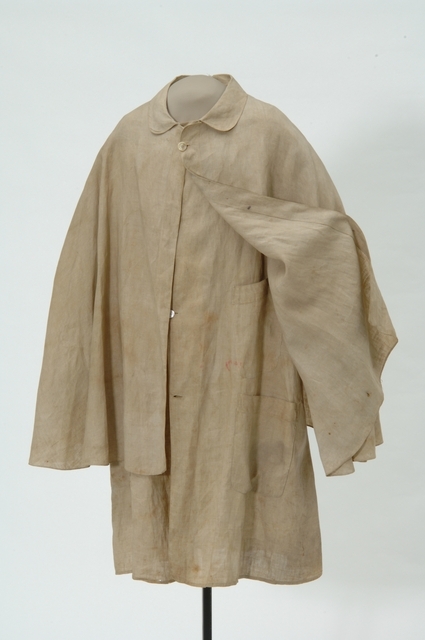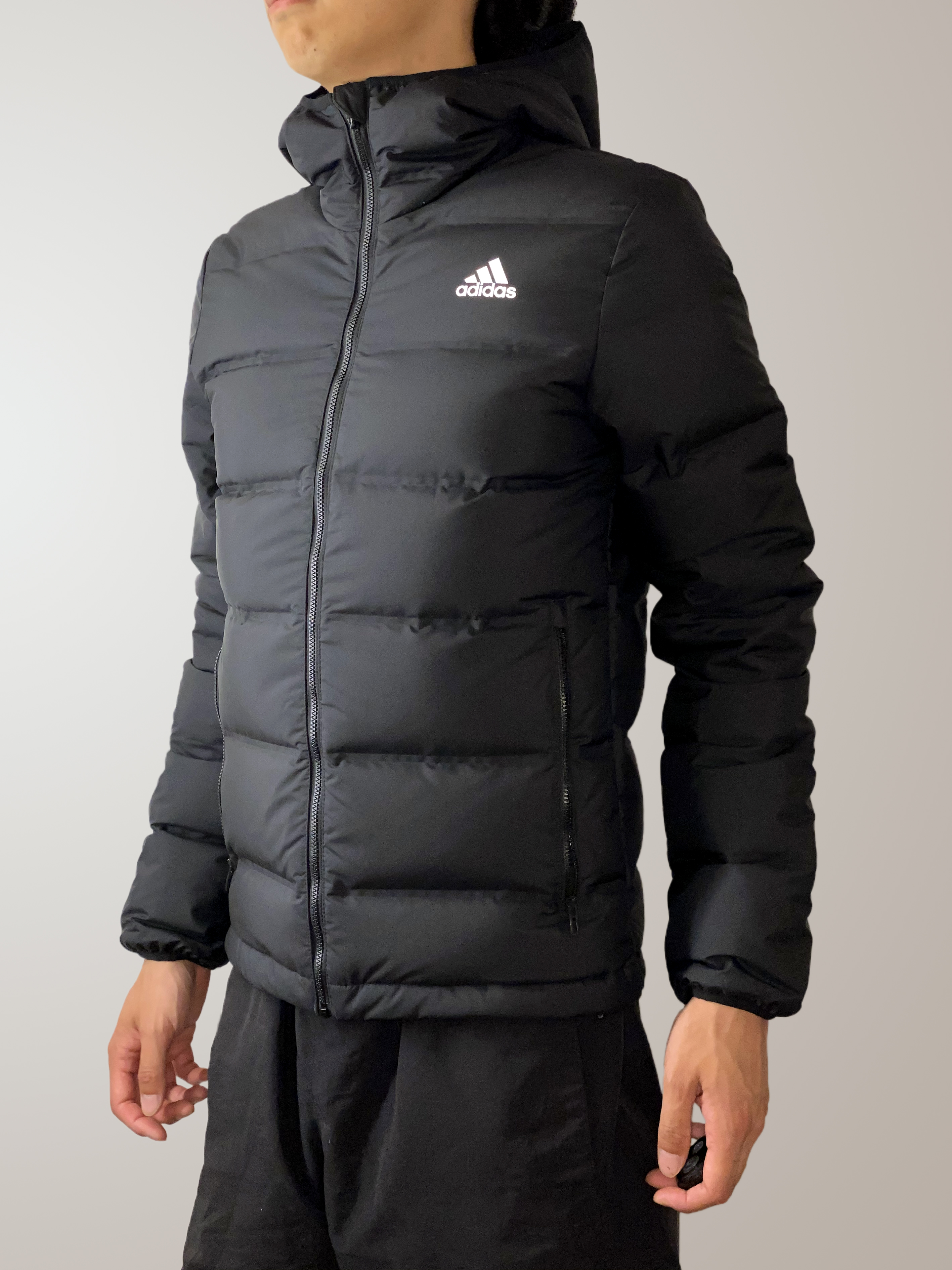|
Outerwear
Outerwear is clothing and accessories worn outdoors, or clothing designed to be worn outside other garments, as opposed to underwear. It can be worn for formal or casual occasions, or as warm clothing during winter. List of outerwear * Academic gown * Anorak * Apron * Blazer * Cagoule *Cloak * Coat * Duffle coat * Duster * Frock coat * Gilet * Goggle jacket *Greatcoat * Hat *Hoodie * Jacket * Leather jacket * Matchcoat * Mess jacket * Mino (straw cape) * Opera coat *Overcoat * Pea coat * Poncho * Raincoat * Rain pants * Redingote * Robe * Shawl * Shirt * Shrug * Ski suit * Sleeved blanket * Sport coat * Sunglasses * Sweater * Sweatshirt * Top coat *Touque *Trench coat *Windbreaker A windbreaker, or a windcheater, is a thin fabric jacket designed to resist wind chill and light rain, making it a lighter version of the jacket. It is usually of lightweight construction and characteristically made of a synthetic material. A ... See also * Fashion accessory, including outerwea ... [...More Info...] [...Related Items...] OR: [Wikipedia] [Google] [Baidu] |
Coat (clothing)
A coat typically is an outer garment for the upper body as worn by either gender for warmth or fashion. Coats typically have long sleeves and are open down the front and closing by means of buttons, zippers, hook-and-loop fasteners, toggles, a belt, or a combination of some of these. Other possible features include collars, shoulder straps and hoods. Etymology ''Coat'' is one of the earliest clothing category words in English, attested as far back as the early Middle Ages. (''See also'' Clothing terminology.) The Oxford English Dictionary traces ''coat'' in its modern meaning to c. 1300, when it was written ''cote'' or ''cotte''. The word coat stems from Old French and then Latin ''cottus.'' It originates from the Proto-Indo-European word for woolen clothes. An early use of ''coat'' in English is coat of mail (chainmail), a tunic-like garment of metal rings, usually knee- or mid-calf length. History The origins of the Western-style coat can be traced to the sl ... [...More Info...] [...Related Items...] OR: [Wikipedia] [Google] [Baidu] |
Cloak
A cloak is a type of loose garment worn over clothing, mostly but not always as outerwear for outdoor wear, serving the same purpose as an overcoat, protecting the wearer from the weather. It may form part of a uniform. Cloaks have been and are worn in countless societies. Over time cloak designs have been changed to match fashion and available textiles. Cloaks generally fasten at the neck or over the shoulder, vary in length, from hip all the way down to the ankle, mid-calf being the normal length. They may have an attached hood and may cover and fasten down the front, in which case they have holes or slits for the hands to pass through. However, cloaks are almost always sleeveless. Etymology The word ''cloak'' comes from Old North French ''cloque'' ( Old French ''cloche'', ''cloke'') meaning "travelling cloak", from Medieval Latin ''clocca'' "travelers' cape," literally "a bell," so called from the garment's bell-like shape. Thus the word is related to the word ''clock ... [...More Info...] [...Related Items...] OR: [Wikipedia] [Google] [Baidu] |
Duster (clothing)
A duster is a light, loose-fitting long coat. The original dusters were full-length, light-colored canvas or linen coats worn by horsemen to protect their clothing from trail dust. These dusters were typically slit up the back to hip level for ease of wear on horseback. Dusters intended for riding may have features such as a buttonable rear slit and leg straps to hold the flaps in place. For better protection against rain, dusters were made from oilcloth and later from waxed cotton. In the late 19th and early 20th centuries, both men and women wore dusters to protect their clothes when riding in open motorcars on the dirt roads of the day. Today Western horsemen's dusters figured little in Western films until Sergio Leone re-introduced them in his movies '' The Good, the Bad, and the Ugly'' (1966) and '' Once Upon a Time in the West'' (1968). The latter played for many months in Paris and was in part credited with a revival of the duster in men's fashions in that city. Si ... [...More Info...] [...Related Items...] OR: [Wikipedia] [Google] [Baidu] |
Duffle Coat
A duffel coat (also duffle coat) is a coat made from duffel cloth, designed with toggle-and-rope fastenings, patched pockets and a large hood. The name derives from Duffel, a town in the province of Antwerp in Belgium where the manufacturing process of this kind of fabric, a coarse, thick, woolen cloth originated. Duffel bags were originally made from the same material. The hood and toggle fastenings from Polish frocks proved popular, the frock spread across Europe by the 1850s. By 1890 a less sophisticated version was being supplied to the British Royal Navy, from various manufacturers. During World War II all British troops wore the coat, among them Field Marshal Sir Bernard Montgomery and Lieutenant-Colonel Sir David Sterling. After the war, the coats became available in England as government surplus stock and became popular, especially with students. In countries freed by British troops from Nazi-German occupation, wearing the coat also meant a tribute to all troopers th ... [...More Info...] [...Related Items...] OR: [Wikipedia] [Google] [Baidu] |
Jacket
A jacket is a garment for the upper body, usually extending below the hips. A jacket typically has sleeves, and fastens in the front or slightly on the side. A jacket is generally lighter, tighter-fitting, and less insulating than a coat, which is outerwear. Some jackets are fashionable, while others serve as protective clothing. Jackets without sleeves are vests. Etymology The word ''jacket'' comes from the French word ''jaquette''. The term comes from the Middle French noun ''jaquet'', which refers to a small or lightweight tunic. In Modern French, ''jaquette'' is synonymous with ''jacket''. Speakers of American English sometimes informally use the words ''jacket'' and ''coat'' interchangeably. The word is cognate with Spanish ''jaco'' and Italian ''giacca'' or ''giacchetta'', first recorded around 1350s. It is ultimately loaned from Arabic ''shakk (شكّ)'', which in turn loaned from Aramean/ Assyrian and Hebrew ''shaḳḳ (שַׁקּ)''. Nylon bomber jacket, also ... [...More Info...] [...Related Items...] OR: [Wikipedia] [Google] [Baidu] |
Mino (straw Cape)
A is a traditional Japanese raincoat made out of straw. Traditional are an article of outerwear covering the entire body, although shorter ones resembling grass skirts were also historically used to cover the lower body alone. Similar straw capes were also used in China, Vietnam and Korea. Overview Rice straw has naturally water-repellent properties, with water droplets that hit a mat of straw tending to flow along the length of the fibres, rather than penetrating underneath it. For this reason, early Japanese rain gear was often made of straw, which had the added benefit of being cheap to acquire, easy to weave and fasten, and being light in weight; however, this rain gear was also bulky in size, and highly flammable. In earlier eras, straw clothing had the additional advantage of affording a significant degree of camouflage in certain terrain, including forests and wetlands, similar to modern ghillie suits. As synthetic fibers and later plastics were introduced to Japan ... [...More Info...] [...Related Items...] OR: [Wikipedia] [Google] [Baidu] |
Redingote
A frock coat is a formal men's coat characterised by a knee-length skirt cut all around the base just above the knee, popular during the Victorian and Edwardian periods (1830s–1910s). It is a fitted, long-sleeved coat with a centre vent at the back and some features unusual in post-Victorian dress. These include the reverse collar and lapels, where the outer edge of the lapel is often cut from a separate piece of cloth from the main body and also a high degree of waist suppression around the waistcoat, where the coat's diameter round the waist is less than round the chest. This is achieved by a high horizontal waist seam with side bodies, which are extra panels of fabric above the waist used to pull in the naturally cylindrical drape. As was usual with all coats in the 19th century, shoulder padding was rare or minimal. In the Age of Revolution around the end of the 18th century, men abandoned the justaucorps with tricorne hats for the directoire style: dress coat with bree ... [...More Info...] [...Related Items...] OR: [Wikipedia] [Google] [Baidu] |
Rain Pants
Rain pants, also called rain trousers, are waterproof or water-resistant pants worn to protect the body from rain. Rain pants may be combined with a rain jacket to make a rain suit. Rain gaiters may also be used for further protection. While rain pants can be made of plastic or coated nylon, modern waterproof materials are commonly used, including waterproof-breathable fabric such as Gore-Tex." They will normally be made from nylon with a polyurethane coating, a waterproof coating that breathes, or a laminated waterproof membrane that breathes (Gore-Tex)." p 4Surviving Cold Weather Gregory J. Davenport - 2003 See also * Hiking equipment Hiking equipment is the equipment taken on outdoor walking trips. Hiking is usually divided into day-hikes and multiple-day hikes, called backpacking, trekking, and walking tours. The equipment selected varies according to the duration, dista ... References {{reflist Hiking apparel Trousers and shorts ... [...More Info...] [...Related Items...] OR: [Wikipedia] [Google] [Baidu] |
Robe
A robe is a loose-fitting outer garment. Unlike garments described as capes or cloaks, robes usually have sleeves. The English word ''robe'' derives from Middle English ''robe'' ("garment"), borrowed from Old French ''robe'' ("booty, spoils"), itself taken from the Frankish word *''rouba'' ("spoils, things stolen, clothes"), and is related to the word ''rob''. Types There are various types of robes, including: * A gown worn as part of the academic regalia of faculty or students, especially for ceremonial occasions, such as a convocations, congregations or graduations. * A gown worn as part of the attire of a judge or barrister. * A wide variety of long, flowing religious dress including pulpit robes and the robes worn by various types of monks. * A gown worn as part of the official dress of a peer or royalty. * Any of several women's fashions of French origin, as '' robe à l'anglaise'' (18th century), ''robe de style'' (1920s). * A gown worn in fantasy literat ... [...More Info...] [...Related Items...] OR: [Wikipedia] [Google] [Baidu] |
Mess Jacket
The mess jacket is a type of formal jacket that ends at the waist. It features either a non-fastening double breast cut or a single-breasted version that fastens. Accessed August 4, 2012]. The jackets have shawl or peak lapels. Used in military , during the 1930s it became a popular alternative to the white dinner jacket in hot and tropical weather for occasions. It also was prominently used, in single-breasted form, as part of the uniform for underclassmen at |
Shawl
A shawl (from fa, شال ''shāl'',) is a simple item of clothing from Kashmir, loosely worn over the shoulders, upper body and arms, and sometimes also over the head. It is usually a rectangular or square piece of cloth, which is often folded to make a triangle, but can also be triangular in shape. Other shapes include oblong shawls. History The words "shawl" and "pashmina" come from Kashmir, the northern region of the Indian subcontinent. Sources report cashmere crafts were introduced by Sayeed Ali Hamadani who was an Iranian scholar when he came to Kashmir in the 14th century. He found that the Ladakhi Kashmiri goats produced soft wool. He took some of this goat wool and made socks which he gave as a gift to the king of Kashmir, Sultan Qutbuddin. Afterwards, Hamadani suggested to the king that they start a shawl weaving industry in Kashmir using this wool. That is how pashmina shawls began. The United Nations agency UNESCO reported in 2014 that Ali Hamadani was one of ... [...More Info...] [...Related Items...] OR: [Wikipedia] [Google] [Baidu] |
Shirt
A shirt is a cloth garment for the upper body (from the neck to the waist). Originally an undergarment worn exclusively by men, it has become, in American English, a catch-all term for a broad variety of upper-body garments and undergarments. In British English, a shirt is more specifically a garment with a collar, sleeves with cuffs, and a full vertical opening with buttons or snaps (North Americans would call that a "dress shirt", a specific type of collared shirt). A shirt can also be worn with a necktie under the shirt collar. History The world's oldest preserved garment, discovered by Flinders Petrie, is a "highly sophisticated" linen shirt from a First Dynasty Egyptian tomb at Tarkan, dated to c. 3000 BC: "the shoulders and sleeves have been finely pleated to give form-fitting trimness while allowing the wearer room to move. The small fringe formed during weaving along one edge of the cloth has been placed by the designer to decorate the neck opening and side seam." T ... [...More Info...] [...Related Items...] OR: [Wikipedia] [Google] [Baidu] |






